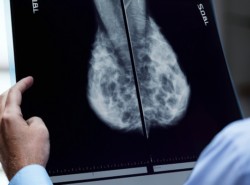
iPreventNEXT – Helping women with breast cancer to make treatment decisions
Published: 05/21/20 3:58 AM
Professor
Kelly-Anne Phillips
Project Description: Some women who have breast cancer consider undergoing a double mastectomy to remove all breast tissue. This decision is a complex one and it is important that women make it using information that is personalised to their situation. A new online tool under development by Professor Kelly-Anne Phillips (Peter MacCallum Cancer Centre/ The University of Melbourne) will use the latest knowledge about breast cancer risk and decision-making to help women, make this challenging decision.
Why this work is needed: The rate of double mastectomy in Australia is rising, but it is believed that many of these surgeries are not medically necessary and hence the risks outweigh the benefits. It is important that clinicians are able to provide women with newly diagnosed breast cancer personalised information about their risk of a second cancer in either breast and a clear understanding of the benefits and risks of double mastectomy. When iPreventNEXT becomes available in the future, it will allow women and their doctors to more accurately predict risk and assist in this decision.
Expected outcomes: iPreventNEXT will be a state of the art risk estimation and decision support tool for women with breast cancer. It will estimate a woman’s personal risk of developing a second breast cancer and help her make a fully informed decisions about whether she wishes to undergo bilateral mastectomy. The look and feel will be similar to the existing iPrevent online tool which is for women who have never had breast cancer.
Project details
Removal of the breasts, or a mastectomy, is a surgical option for the treatment and prevention of breast cancer. However, it is a significant and expensive surgery, and can result in lifelong physical and psychological issues. Rates of bilateral mastectomy in women diagnosed with breast cancer on one side have been rising rapidly, and it is believed most of these are medically unnecessary.
In this study, Professor Phillips and her team will use data from long-term Australian breast cancer family studies and the latest information on risk factors to develop and validate a model to estimate the risk of a second breast cancer for women who have been newly diagnosed with their first cancer. This new model will be incorporated into an online decision support tool, iPreventNEXT. This tool will use data such as the characteristics and planned treatment of the current breast cancer, mammographic breast tissue density, genetic profile and family history to provide a risk estimation. It will also use state of the art risk communication techniques. This will allow women to make informed decisions about their own healthcare, in conjunction with their doctors, family members and loved ones.